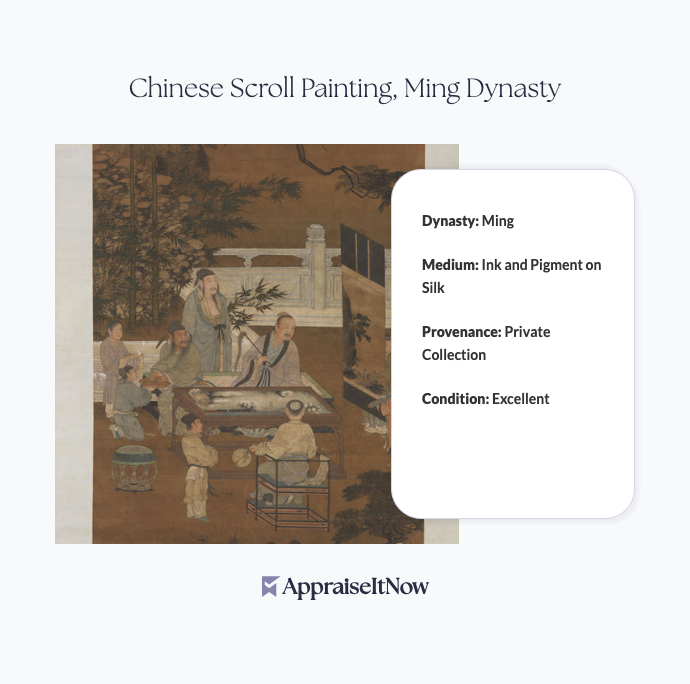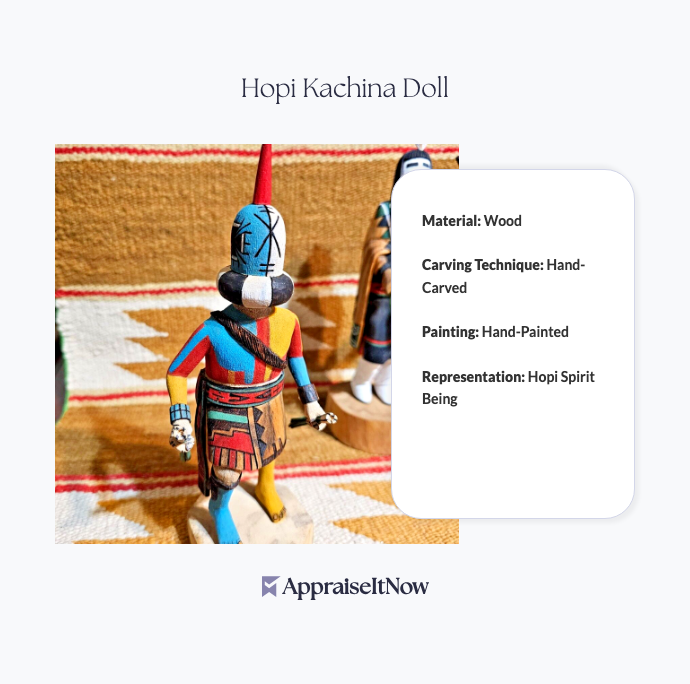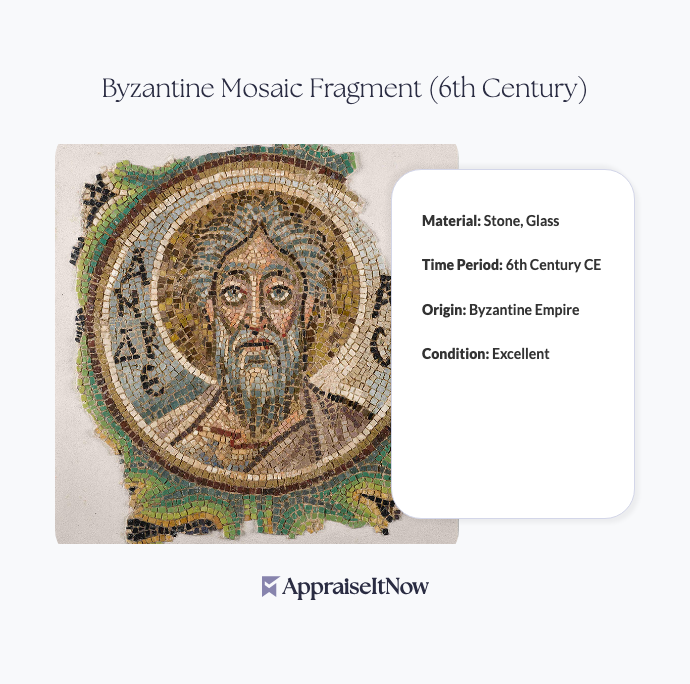<h1>How to Get Your Chinese Scroll Painting, Ming Dynasty Appraised</h1>
<p>If you've inherited or discovered a Chinese scroll painting from the Ming Dynasty, you're likely holding something genuinely valuable. These masterpieces, with estimated values ranging from <strong>$5,000 to $8,000</strong> for well-preserved examples, represent centuries of artistic heritage and cultural significance. Getting your painting professionally appraised is essential whether you're planning to sell, seeking insurance coverage, or simply want to understand what you own.</p>
<h2>Understanding Your Ming Dynasty Scroll's Value</h2>
<p>Chinese scroll paintings from the Ming Dynasty (1368-1644) represent some of the most sought-after pieces in today's art market. Your scroll, if it depicts a serene landscape with mountains, forests, and winding rivers—common themes in Ming masterworks—carries value far beyond mere decoration. The skilled brushwork, vivid colors, and traditional ink-and-wash techniques employed by master artists of this era create works that collectors and museums actively pursue.</p>
<p>What makes a Chinese scroll valuable? The combination of age (first created in the 15th century), rarity (often only a few known examples of any given work exist), and artistic merit all contribute to valuation. When exploring <a href="/types/antique-artwork">antique artwork appraisals</a>, you'll find that Ming Dynasty pieces occupy an elite tier due to their technical mastery and historical importance.</p>
<div class="callout tip"><p><strong>Collector's Insight</strong></p>
<p>Ming Dynasty scrolls executed on high-quality silk and expertly preserved for over 500 years command premium prices, often reaching the upper end of market estimates.</p></div>
<h2>Verifying Authenticity Before Appraisal</h2>
<p>Before investing in a professional appraisal, understanding basic authentication markers helps you assess whether your scroll warrants professional evaluation. How do I know if my Chinese painting is valuable? Several indicators suggest you have a legitimate masterpiece rather than a reproduction.</p>
<p>Authentic Ming Dynasty scrolls display specific characteristics that experts examine. Look for traditional Chinese markings or seals—these stamps indicate authenticity and, when verified by specialists, can significantly enhance value. The scroll itself should be painted on genuine silk rather than paper, and the brushwork should show the confident, flowing strokes characteristic of trained masters. What markings or seals indicate authenticity in Chinese paintings? Collector's seals, artist signatures, and imperial marks all provide authentication clues, though deciphering their legitimacy requires specialized expertise.</p>
<p>The condition of your scroll matters tremendously. Paintings expertly preserved for over 500 years with minimal deterioration, fading, or damage command substantially higher appraisals than pieces requiring restoration. Our guide on <a href="/blog/understanding-the-impact-of-condition-on-artwork-appraisals">understanding artwork condition's impact on appraisals</a> explores how preservation directly influences market value.</p>
<h2>Provenance and Its Impact on Your Scroll's Worth</h2>
<p>How can provenance affect the value of a Ming dynasty scroll painting? Documentation of your painting's ownership history, exhibition record, and previous valuations can increase its appraised value by 20-40% compared to undocumented examples. Collectors and institutions actively seek pieces with clear chain-of-custody documentation.</p>
<p>Gather any available information about your scroll's history. Previous purchase receipts, insurance documentation, family records indicating how you acquired it, or exhibition catalogs all strengthen provenance. Even informal documentation—such as photographs showing the scroll in someone's collection decades ago—contributes to its narrative value. When <a href="/blog/exploring-the-role-of-provenance-in-art-appraisals-assessing-historical-significance">exploring the role of provenance in art appraisals</a>, you'll discover that a well-documented Ming Dynasty scroll often outperforms undocumented pieces by significant margins in both auction results and private sales.</p>
<div class="callout note"><p><strong>Important Consideration</strong></p>
<p>Scrolls with export or cultural heritage restrictions may face legal complications when selling internationally. Professional appraisers can advise on these limitations during valuation.</p></div>
<h2>Finding the Right Professional Appraiser</h2>
<p>Selecting the right appraiser is critical for accurate valuation. How do I get my Chinese art appraised? Look for credentialed experts with specific experience in Asian art and antiques. Appraisers holding credentials from organizations like the <strong>American Society of Appraisers (ASA)</strong>, <strong>International Society of Appraisers (ISA)</strong>, or <strong>American Academy of Appraisers (AAA)</strong> maintain strict ethical standards and USPAP compliance.</p>
<p>Your appraiser should have demonstrated expertise in Chinese painting, particularly Ming Dynasty works. Ask potential appraisers about their experience with similar pieces, their familiarity with authentication methods, and their understanding of the current Asian art market. A qualified professional can access comparable sales data, authenticate your specific scroll, and provide documentation suitable for insurance, estate, or sale purposes. When <a href="/blog/hiring-a-professional-for-artwork-appraisals">hiring a professional for artwork appraisals</a>, prioritize specialists in Asian art who understand the nuanced factors affecting Ming Dynasty valuations.</p>
<h2>What Documentation You'll Need</h2>
<p>How much does a professional appraisal for a Chinese scroll painting cost? Standard appraisals typically range from <strong>$300 to $1,500</strong> depending on the scroll's complexity, estimated value, and the appraiser's experience level. Higher valuations or particularly rare pieces may warrant more extensive evaluation fees.</p>
<p>To facilitate your appraisal, prepare comprehensive documentation. What documentation and photos should I provide when submitting a scroll for appraisal? Start with high-resolution photographs of the entire scroll from multiple angles, including close-ups of any signatures, seals, or markings. Provide photos of the mounting, roller mechanisms, and any silk wrapping or storage materials. Document the scroll's dimensions, current condition (noting any tears, stains, or areas of concern), and any previous conservation work completed.</p>
<p>Include written descriptions of your scroll's subject matter, the artistic style employed, and any historical context you're aware of. If you have prior appraisals, auction results, or insurance documentation, gather these materials as well. This comprehensive package enables appraisers to work efficiently and provide the most accurate valuation possible.</p>
<h2>The Appraisal Timeline and Process</h2>
<p>How long does a thorough appraisal of a Chinese scroll painting typically take? Most professional appraisals require 2-4 weeks from submission to final report delivery. Complex pieces with authentication questions or requiring extensive comparative research may extend to 6-8 weeks.</p>
<p>The appraisal process typically involves several stages. Your appraiser will examine the scroll's physical condition, verify materials and techniques, research comparable sales and market data, and consult authentication resources. For Ming Dynasty pieces, specialists often cross-reference museum collections, exhibition histories, and scholarly publications to support their valuations. Learn more about <a href="/blog/what-do-appraisers-look-for-when-appraising-antique-artwork">what appraisers look for when evaluating antique artwork</a> to understand the depth of analysis involved.</p>
<div class="callout tip"><p><strong>Pro Tip</strong></p>
<p>Professional appraisers can advise on whether your scroll requires conservation work before achieving maximum value. Sometimes strategic restoration increases overall worth substantially.</p></div>
<h2>Market Trends and Current Values</h2>
<p>The Ming Dynasty art market remains exceptionally strong, with significant appreciation over the past decade. Why are these paintings valuable? Several factors drive demand. The cultural and artistic heritage reflected in Ming Dynasty scrolls appeals to both Western collectors and Asian institutions seeking to repatriate national treasures. The limited supply—with only select examples reaching the market annually—creates competitive bidding when authenticated pieces appear for sale.</p>
<p>Current market dynamics show scrolls depicting serene landscapes with mountains and forests commanding premium prices, particularly when executed with vivid colors and masterful brushwork on high-quality silk. The artistic sophistication of the Ming era, considered a golden age for Chinese painting, positions these works as museum-quality pieces increasingly sought after by serious collectors. Our guide on <a href="/blog/evaluating-the-cultural-significance-of-art-appraisals-beyond-monetary-value">evaluating the cultural significance of art appraisals</a> explores how Ming Dynasty scrolls transcend monetary value to embody profound cultural importance.</p>
<h2>Insurance, Sale, and Export Considerations</h2>
<p>A professional appraisal provides essential documentation whether you're seeking insurance coverage or preparing for sale. Insurance companies require certified appraisals to establish replacement cost, ensuring your scroll maintains appropriate coverage as values fluctuate. When updating your homeowners or specialized art insurance policies, provide your appraiser's detailed report specifying materials, condition, provenance, and current market value.</p>
<p>Regarding sales, whether through auction houses or private treaty, professional appraisals establish credible asking prices and support negotiations. Are there export or cultural heritage restrictions when selling an antique Chinese scroll? Yes, in many cases. Some nations restrict export of culturally significant pieces, and international sales may require permits. A qualified appraiser can advise on these restrictions and ensure your transaction complies with applicable laws. This is particularly important when considering <a href="/blog/what-to-know-before-appraising-antique-artwork">understanding antique artwork appraisals</a> in an international context.</p>
<h2>Beyond Monetary Value</h2>
<p>Understanding your Ming Dynasty scroll extends beyond appraised dollar amounts. These paintings represent the convergence of artistic genius, cultural heritage, and historical significance. The skilled brushstrokes reflect training developed over years of study. The subject matter—mountains, forests, and rivers—connects to philosophical traditions in Chinese aesthetics. The silk medium itself represents centuries of material technology perfected through imperial workshops.</p>
<div class="callout note"><p><strong>Key Takeaway</strong></p>
<p>A certified appraisal of your Ming Dynasty scroll painting provides authoritative documentation essential for insurance, sale, or estate planning purposes. Professional appraisers like those credentialed through <strong>AppraiseItNow</strong> combine specialized expertise in Asian art with USPAP compliance to ensure your valuable scroll receives accurate, market-based valuation that honors both its monetary worth and cultural significance.</p></div>







.avif)







